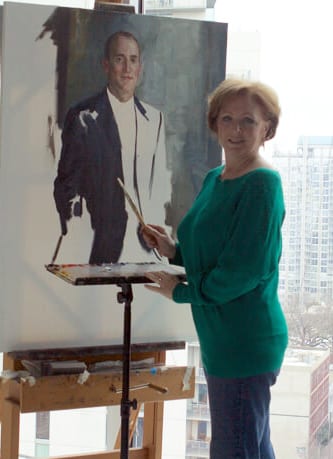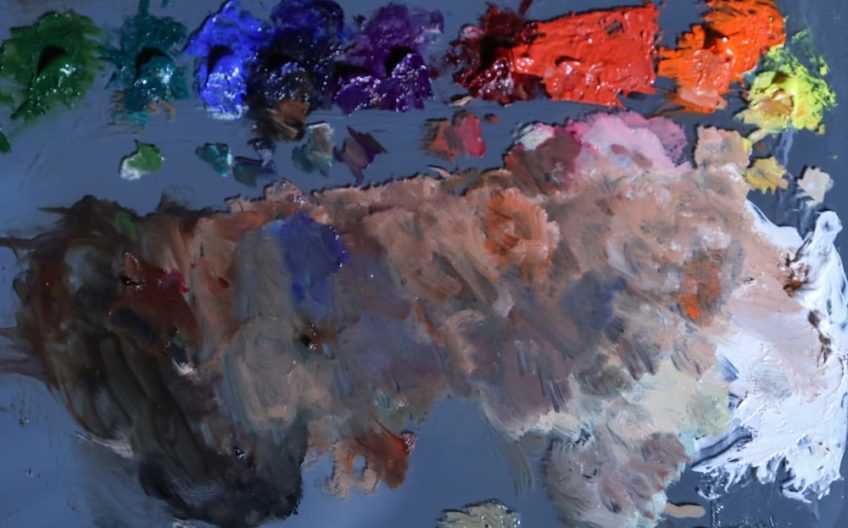By Margaret Ann Garrett
At the beginning of the October critique session, Carol Baxter Kirby reflected on her work and methods she uses for improvement and growth. “I try to analyze where I’m weak, what I need to improve upon, areas where I get carried away and go astray.”
 She commented on the basic human need for structure in life, and how it is mirrored in painting. Once upon a time, when she was an avid gardener, “All of a sudden, I realized how I’d planned this massive garden all around color, with no attention at all to structure. I’d been obsessed with color, and nothing else, and had to deconstruct the garden to begin again.” Relating that experience to her paintings, she said, “Sometimes, there too, I’m obsessed with color. But there’s so much more to think about in painting.”
She commented on the basic human need for structure in life, and how it is mirrored in painting. Once upon a time, when she was an avid gardener, “All of a sudden, I realized how I’d planned this massive garden all around color, with no attention at all to structure. I’d been obsessed with color, and nothing else, and had to deconstruct the garden to begin again.” Relating that experience to her paintings, she said, “Sometimes, there too, I’m obsessed with color. But there’s so much more to think about in painting.”
 Kirby opened the session by observing that, “As artists…people are always going to look at our paintings. We have to learn how to take comments that may be painful. Critique sessions are a great setting to get useful feedback and encourage each other.”
Kirby opened the session by observing that, “As artists…people are always going to look at our paintings. We have to learn how to take comments that may be painful. Critique sessions are a great setting to get useful feedback and encourage each other.”
From each submitting artist, she asks, “Tell me a little about the painting, the areas you feel good about, and what you were striving for.” Some useful advice that emerged was:
-
-
- Make clear decisions about what to leave out of the picture, as well as what to put in.
- Ask yourself, what do I want to emphasize? Areas of the strongest contrast tend to draw the eye. Consider its placement carefully.
- Don’t rely 100% on your reference photos. Utilize caution when working from photos. Perspective can be deceptive.
- When taking advice on a work-in-progress, don’t let someone else influence you unduly. After all, it’s your painting. Understand that, “It’s ok to do what you want, but be aware that you are doing it, and know for what purpose.”
- Apply nuances in movements.
- In painting young children, learn to soften to represent their true age.
- Repeating pyramid shapes in a composition makes for a graphically strong painting.
- It’s fun to experiment with different styles, but if you’re trying to market your work…it’s useful to be consistent.
- A good visual tension is created when elements are somewhat askew.
- Understand value nuances. “Get your values right first, and then your color”—advice from a landscape artist.
- Taking BW photos of your work-in-progress can provide an objective check on values.
- There are areas we really get excited about painting—usually faces—but don’t forget to work on painting hands and feet well too.
- And whenever you paint, do as Richard Schmid advises, “Paint with unhurried pleasure.”
-
Photo credit: Vinod Sharma


